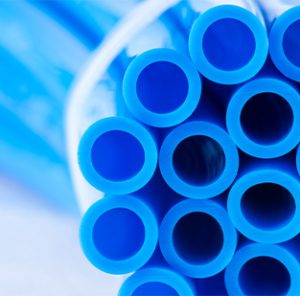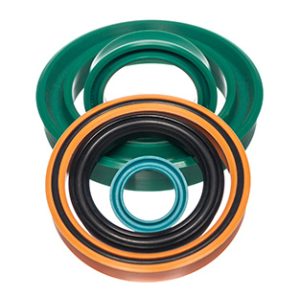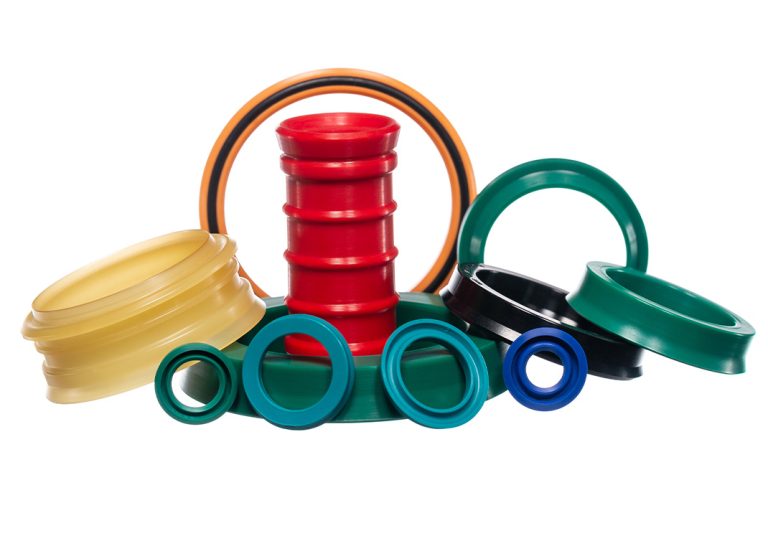Polyurethane as a seal material
The foam in your armchair. The strap on your wristwatch. The wheels on a supermarket shopping trolley and beyond; Polyurethane certainly has a diverse range of uses since its invention almost 85 years ago. Aside from day-to-day products; it is also a highly capable and versatile sealing material - and an option that is often overlooked. Here we explore a little deeper into the properties of polyurethane. Covering it's uses as a seal material and how it is manufactured.

What is polyurethane?
Is it rubber? Is it plastic? Rigid or flexible? The answer to all of those questions is – yes, it is all of these things! Polyurethane covers a group of materials; plastic polymers produced by the combination (or synthesis) of di-isocyanates with polyols and a chain extender.
Thermoplastic Polyurethane (TPU) belongs to the Thermoplastic Elastomer (TPE) family. It was originally invented by Otto Bayer in 1937 and further developed during WWII as an alternative to rubber (which was difficult to source at the time). It can be formulated to produce different finished materials with an array of properties suitable for a wide range of applications.
Where do we use polyurethane?
In addition to seals, polyurethane is the basis of a diversity of products. These include varnish, foam mattresses, roller skate wheels and surfboards. There are literally hundreds of different types of polyurethanes, each made in a slightly different way to suit the demands of the final product.


How are polyurethane materials manufactured?
In a one-step process, the polyol (a compound containing multiple hydroxyl groups) is mixed with isocyanate (highly reactive low molecular weight chemicals) and a chain extender (low molecular weight diols or diamines). The result is a random copolymer with a physically cross-linked irregular molecular structure.
In a two-step process, the polyol and isocyanate are mixed first to produce a pre-polymer. This is then mixed with the chain extender to produce a block copolymer with more regular molecular structure. This can result in improved and more consistent material properties in exchange for a slightly higher production cost.
We use rigid polyurethanes for sealing products. The mixed liquid material is either cast into tubes from which seals can be machined on CNC lathes. Alternatively cast into bricks which are then chipped, mixed with dye (or other additives), and fed into injection moulding machines.

Why is polyurethane a good seal material?
When formulated appropriately, polyurethane yields an impressive set of material properties that make it an ideal material for sealing products. It can be flexible which allows seals to be assembled into closed grooves. This capability also resists large deformation and makes them robust to survive without damage. In this respect it outperforms PTFE and is at least on a par with rubber.
Polyurethane has excellent elastic behaviour, recovering almost instantly from deformation. Again, outperforming PTFE (no springs or rubber energisers needed to give the initial sealing contact stress) and matching rubber materials. However, unlike rubber it has a lower coefficient of friction, with very high abrasion resistance, tensile strength and stiffness. These properties mean it is often used without anti-extrusion/back-up rings at considerably higher pressures than even a 90-durometer elastomer O-ring would be capable of.
How does polyurethane perform in tests?
In abrasion tests, polyurethane has a quarter of the wear rates shown by typical rubber sealing materials. These include NBR (and considerably lower than even filled grades of PTFE). Its tensile and tear strengths are typically 3-5 times higher than rubber seal materials. Although it lacks the chemical resistance and temperature capability of PTFE, it is compatible with mineral oils.
Polyurethane seal materials typically have a general operating temperature range of around -35°C to +110°C. However, more specialist grades can remain flexible down to -50°C, and other grades can push the upper limit to around 130°C.
Because it can be injection moulded as well as machined from tubes, it lends itself to production of seals in both high and low quantities. This allows commercial flexibility at both prototype and production stages of a project.
With complex chemistry, care must be taken to ensure sealing fluid resistance and temperature capabilities are always considered (as is the case when selecting any seal material). However, in many applications, polyurethane can often bring physical property and whole-life cost advantages over rubber or PTFE options. This can mean it bridges the gap in capabilities between these material groups.